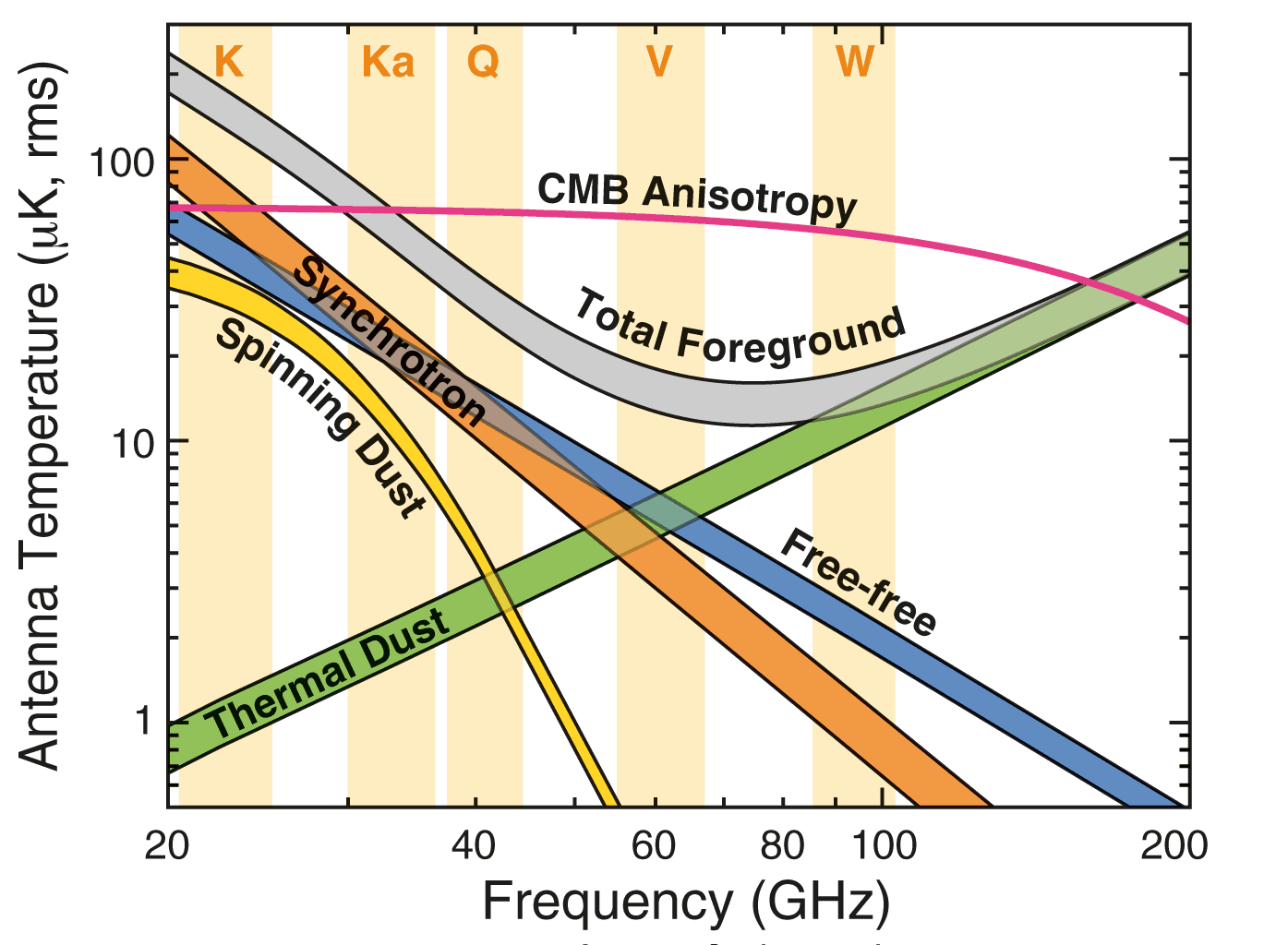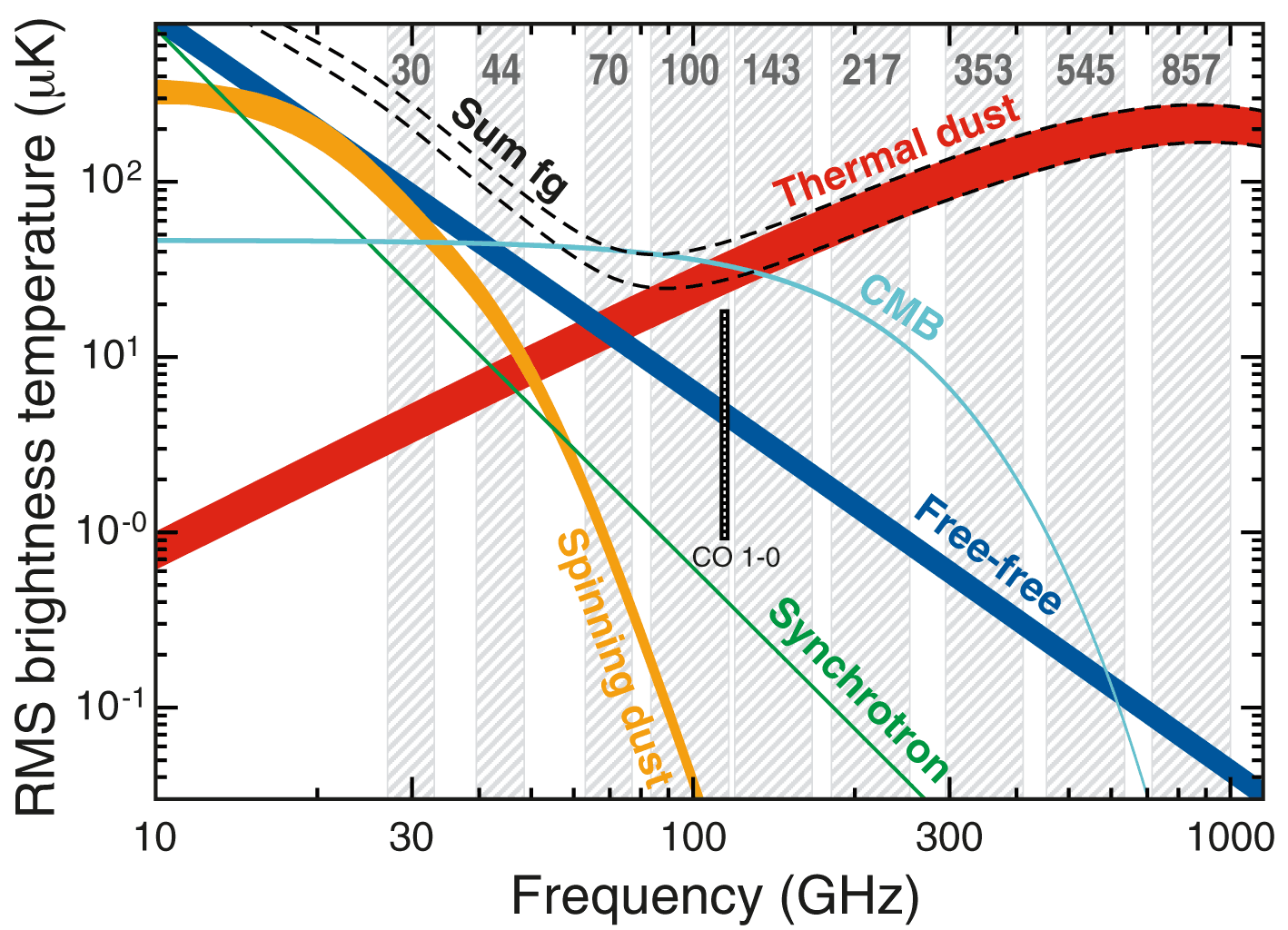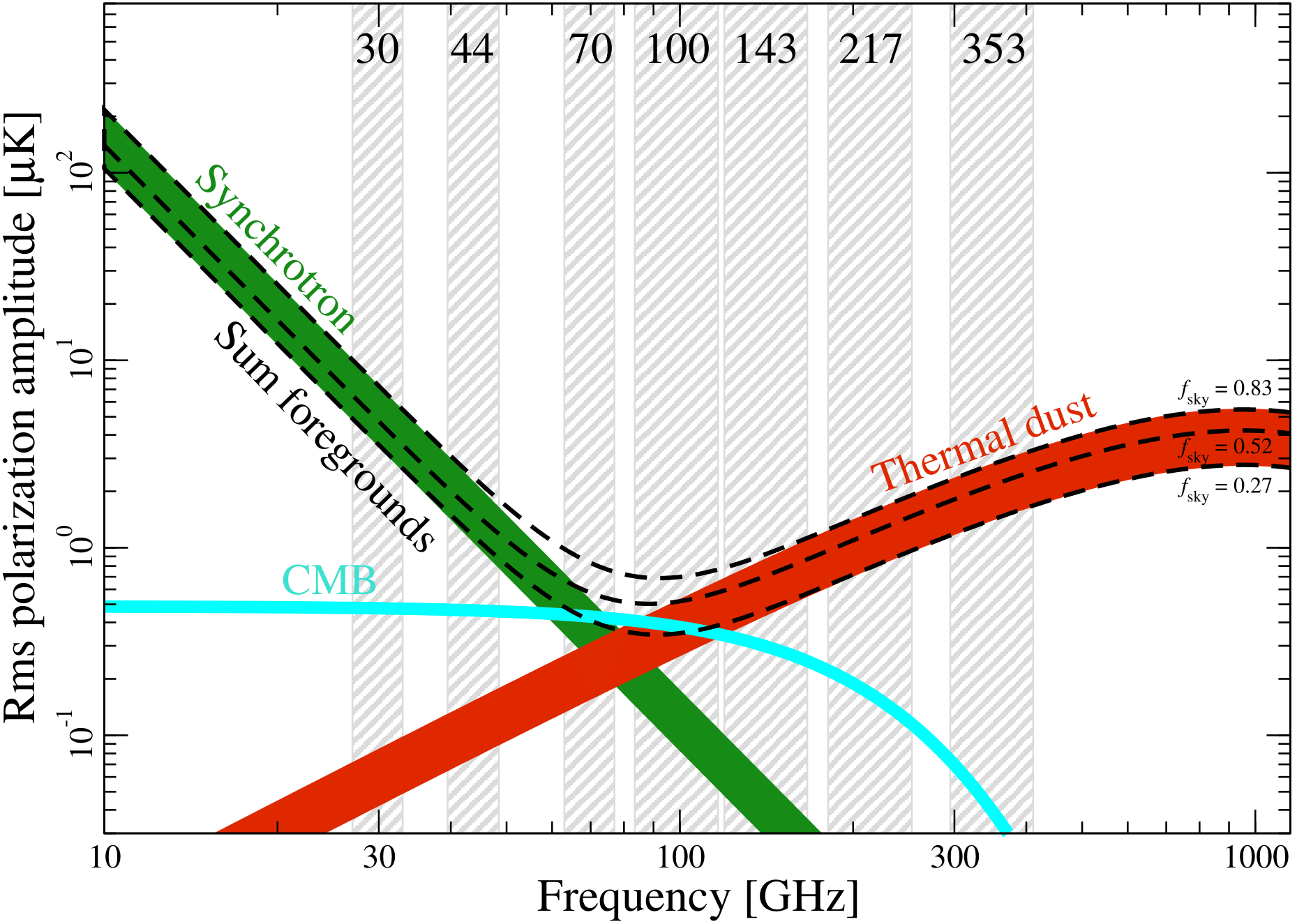

Foreground Overview
The Milky Way emits microwave radiation that can interfere with observations of the CMB anisotropy. Fortunately there is a local minimum in the Galactic emission near 70 or 80 GHz where the CMB signal is relatively bright compared to the Galactic signal. The figures above show recent determinations of the rms anisotropy as a function of frequency for the CMB and for sources of foreground emission: synchrotron, free-free, anomalous microwave emission (often attributed to spinning dust), and thermal dust emission. The first two figures show results for temperature anisotropy, from Bennett et al. 2013 (left) and from Planck 2015 Results X. The third figure shows results for polarization anisotropy from Planck 2018 Results IV. Polarization anisotropy for free-free emission and spinning dust emission is negligible. In each figure, the lower and upper curves for each foreground component show the anisotropy for two sky cuts, retaining 69% and 75% of the sky respectively for the first figure, 81% and 93% of the sky for the second figure, and 27% and 83% of the sky for the third figure. The figure from Bennett et al. 2013 is available on our foreground image page.The other figures are available from the Planck Picture Gallery and are credited to ESA and the Planck Collaboration. One frequently used technique for removing Galactic foregrounds is to use existing Galactic maps as foreground emission templates and scale assuming a frequency dependence. Such templates are available in the Diffuse Emission and Derived Diffuse Components sections, generally as maps stored in nested HEALPix pixelization. Models of the foreground emission also exist, either resulting from studies at specific frequencies (e.g., see the Derived Diffuse Components section), or presented as generalized software for a variety of applications (e.g., see the Diffuse Emission Models section, which contains links to applications such as PySM, GSM, and the Planck Sky Model). In addition to maps of diffuse emission, the Compact Sources section provides access to a number of Point Source catalogs. SZ Cluster catalogs are also available. Pixels contaminated by bright sources can be masked; residual contamination from sources that are not masked may be estimated or modeled. See the Component Separation Methods page for a description of techniques addressing foreground removal and/or modeling. This page includes links to e.g. the BeyondPlanck Commander3 code release. The Polarization Surveys page contains a table focused on ongoing or upcoming surveys with polarization data useful for foreground analyses. Experiments include, but are not limited to, C-BASS, S-PASS and CLASS. |




